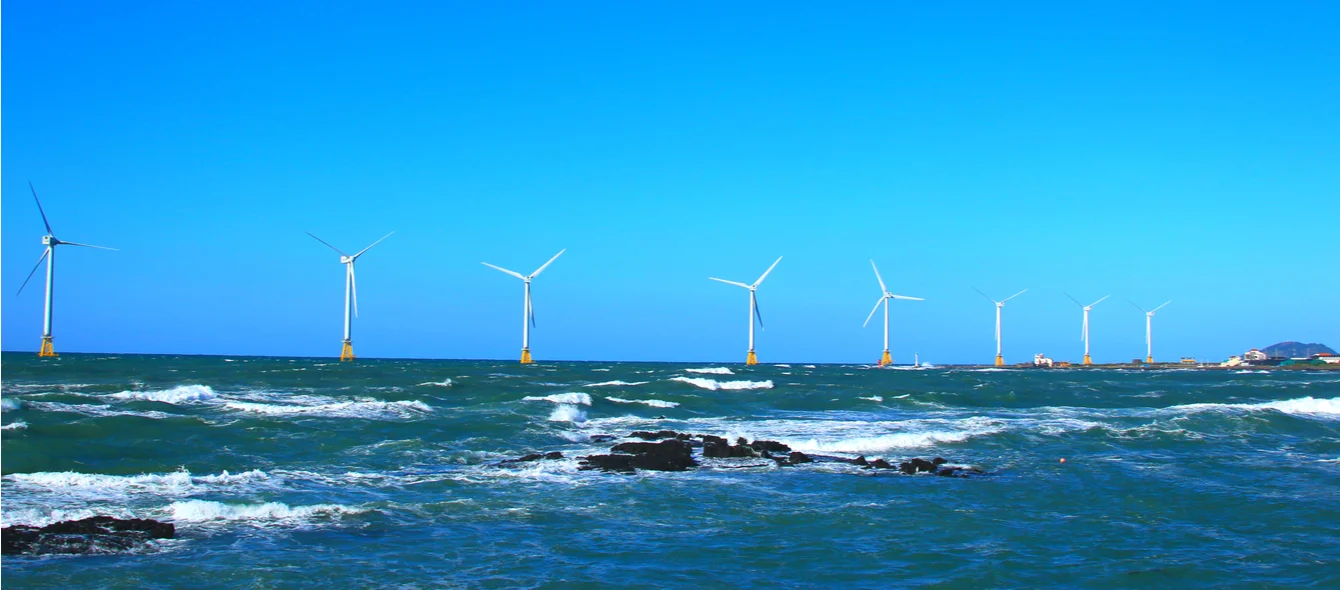Offshore wind development to date has been focussed on Northern Europe, but Asian countries are now recognising its potential as a variable baseload source of clean energy with a clear downward cost trajectory.
China takes the lead
China, in particular, is leading the way in developing offshore wind supply chains, adding in 2018 1.6 GW offshore wind capacity, more than any other country that year, bringing its total to 3.6 GW.
This put it third in the world in terms of installed capacity behind the UK and Germany, according to the International Energy Agency’s Offshore Wind Outlook 2019, published last November.
The IEA forecasts that China could have 107 GW of offshore wind by 2040, in comparison with 127 GW for the EU and 38 GW in the US.
Forecast: Offshore wind power capacity until 2040
Figures in gigawatts (GW); source: IEAAlthough its planning goals are not always met, the country has ambitious targets that could see it emerge as the largest offshore wind market in the world by the middle of this decade. The country’s 13th five-year plan called for 5 GW of offshore wind to be installed by the end of this year. According to forecasts by FTI Consulting, China will be adding 4 GW a year of offshore wind 2024.
Provincial level planners are a key part of delivering central government targets. In January last year, the government of Jiangsu province approved 6.7 GW of offshore wind capacity at a cost of 122 billion renminbi (€16 billion). The plans, which span 24 separate developments, are part of Jiangsu’s 10 GW ‘Three Gorges of the Sea’ project.
Guandong province announced in 2018 that it was to start construction of more than ten offshore wind farms with combined capacity of 3.65 GW. In 2017, the Guangdong Development and Reform Commission called on the province to start or have completed 12 GW of offshore wind by late 2020, an exceptionally ambitious time frame for such a large amount of capacity.
Two Chinese companies in particular are emerging as sector leaders – China Longyuan Power Group and the China Three Gorges Corporation, both of which are state-owned. The number and size of Chinese offshore wind turbine manufacturers are also growing, the market leaders being Envision, Goldwind, Ming Yang and SEwind.
Consultants Wood Mackenzie say that a huge 45 GW of projects have been approved for higher feed-in tariffs before 2022, confirming the size of China’s ambitions. However, the sector is experiencing growing pains with grid connections falling behind construction and in particular a lack of purpose-built wind installation vessels.
Taiwan’s windy strait
Taiwan is also making sound progress in the sector. The country completed its first offshore wind turbines in 2016, connecting 8 MW of capacity at the Formosa 1 project. The second 120-MW phase of the project started generating power last September, but the government has much bigger plans for the development of offshore wind in the Taiwan Strait.
Taipei hopes for 500 MW of capacity to be commissioned this year and a further 5 GW in the period from 2021-25 with other developments following from 2026-2030. In October, financial close was achieved on the 376-MW Formosa 2 project allowing it to start construction. The Formosa 1-3 projects should deliver total capacity of 2.5 GW.
Vietnam fires the starting gun
Vietnam has integrated offshore wind capacity into its energy sector planning, offering a recently increased Feed-in Tariff of $98/MWh to developers who build farms before November 1, 2021.
According to a study by the Dutch Ministry of Foreign Affairs, published in July 2018, Vietnam’s coastal area between Qui Nho’n and Ho Chi Minh city has one of the world’s best offshore wind resources with speeds of 7-11 meters per second on average at a height of 50 metres.
The area also boasts relatively shallow waters and a consistent seabed, both important elements in achieving low-cost construction.
In January last year, the Vietnamese government approved the 3.4 GW Thang Long offshore wind project, which is to be developed by UK company Enterprise Energy in ?phases. The approval was to proceed with survey work and submit the project into the national power development plan.
Changing perceptions
Illustrating the changing perception of offshore wind’s potential is the adoption of development plans by two of the regions largest and most advanced economies, South Korea and Japan.
Although Japan has had commercial-scale offshore wind turbines in operation since 2010, it has yet to build its first large offshore wind farm. The government passed laws last year enabling offshore wind development and identified 11 suitable areas for development.
Japanese interest in offshore wind has risen in part because of the problems experienced in restarting the country’s nuclear plants following the 2011 Fukushima nuclear disaster.
Japan has 29,751 km of coastline, the seventh largest in the world, and while its seabed becomes deep relatively close to shore, it is still estimated to have 93 GW of offshore wind potential in water depths acceptable for fixed installations, according to a study published by Mitsui Global Strategic Studies Institute in 2015.
Meanwhile, South Korea announced its 3rd Basic Energy Plan in June last year, targeting a 20% share for renewables in energy supply by 2030 and a 30-35% share by 2040.
The government plans to curtail new coal and nuclear plant construction. As a result, the country’s offshore wind potential has come to the fore with its Renewable Energy implementation plan targeting 12 GW of capacity by 2030. According to the IEA, South Korea could have 20 GW of offshore wind by 2035.
